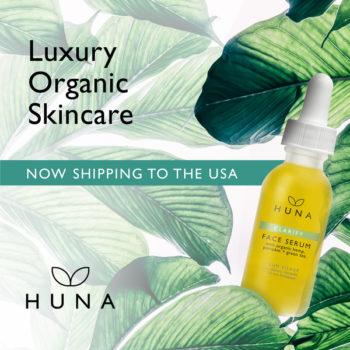Your cart is currently empty!
The Gut-Skin Connection Series 2: Digesting the Science

In our last post, we talked about how everyone has their own collection of bacteria in their gut – the “Gut Microbiome”. What does this mean exactly? We have good and bad bacteria that live in our systems, on our skin, and in our hair! The microflora in our stomach and intestinal tracts have their own unique balance, much like an ecosystem (this is where we get the idea of a microbiome). The food we eat can feed either the good bacteria or the bad bacteria, but it’s important to always have a balance of both[1]. When our gut bacteria become unbalanced, it is known as dysbiosis (microbial imbalance), and decreases our ability to produce anti-inflammatory metabolites as well as absorb nutrients from our food. As you can imagine, this would present itself in a number of ways but what we want to talk about today is how this affects our skin!
The Gut-Skin connection is quite complex as a multitude of factors are at play – environmental stressors, whether we’re sick, endocrine function, our diet, the list goes on. However, the research being done on how our gut, and the bacteria within it, affects our skin is becoming stronger. Research focusing specifically on how changes in gut bacteria affect skin conditions is definitely the most compelling. One large study manipulated the microbiome by changing variables such as probiotic and prebiotic supplements and observed the results. These researchers were able to conclude that probiotics, prebiotics, and synbiotics (the combination of both probiotics and prebiotics together) are both treatment and preventative measures for inflammatory skin diseases like acne and psoriasis[2]. Disorders such as Inflammatory Bowel Disease (IBD) commonly affect the skin; those with the disorder can experience ulcers, oral lesions, rough patches of skin, and other inflammatory skin conditions[3]. Other factors such as food allergies, like lactose intolerance, cause an inflammatory response in the body – which can show up in our skin as well[4]. Overall, scientists have found strong links between inflammatory skin disorders and gut dysbiosis[5].

Psoriasis
For those with Psoriasis, individuals actually host a higher level of “bad” bacteria in their gut and lower levels of “good” bacteria than is optimal[6]. Two specific bacteria types have been isolated as being significantly underpopulated in individuals with psoriasis (Bacteroides and Parabacteroides) while two specific types are significantly overpopulated (Ruminococus and Faecalbacterium) compared to healthy individuals[7], making the supplementation of these bacteria a potential treatment.
Rosacea
In 2017, Scientists collected research from around the world to create a meta-analysis on a possible link between rosacea and our gut microbiome. They were able to find a statistically significant relationship between individuals with rosacea and high levels of H. pylori bacteria in the gut[8]. Unfortunately, there are also a number of studies done that do not find a link between this specific bacteria and rosacea. In addition, the eradication of the H. pylori bacteria in rosacea patient is not a consistently effective treatment[9] and more research needs to be done.

Eczema
Perhaps the most well researched is the relationship between eczema and our gut microbiome. In today’s germ-free world, kids are not being exposed to as many types of bacteria as they once were, and there is significant evidence that this could lead to the development of eczema[10]. The specific gut bacteria Staphylococcus aureus is no longer making its way into infant digestive tracts – causing a weaker immune system and an increased chance of eczema9. Research has found significantly lower bacteria types in the gut microbiota of those with eczema than those who are healthy[11]. Probiotics were demonstrated to be an effective treatment in infants, with a significant reduction in eczema development at 2 years of age[12]. In addition, researchers followed up on children who were treated with probiotics and determined the protective effect persisted through to age 7[13]. Variation and microbial diversity in early childhood is incredibly important for developing a healthy, happy body.
Acne
Moderate to severe acne affects about 20% of young people[14] and nearly half of all women aged 21 to 30[15]. There are a number of factors involved with the cause of acne, most being hard to pin down and can vary significantly between people, making it a very difficult and complicated condition to treat. Often, patients with acne undergo a trial and error process involving a multitude of topicals, antibiotics, and other medications. That being said, there is a multitude of research that support the theory of a connection between acne and a gut dysbiosis[16]. One study was able to determine a significant difference between bacteria types in those with acne and those without. The actinobacteria, or healthy bacteria, was 1.95% lower than in healthy patients and the proteobacteria, or unhealthy bacteria, was 1.34% higher than in healthy patients[17].
Dairy consumption and acne have consistently been an inconclusive area of research – with some studies finding a strong link and others finding no relationship. Milk, on one hand has been positively correlated with acne in teenagers, while yogurt and cheese seemed to have no negative effect[18], possibly due to their probiotic contribution. Another theory about dairy and acne, also applies to sugar and acne: increase in insulin activity. A high glycemic load, or a diet high in carbohydrates, has been linked to increased potential for developing acne because of its activation of insulin[19]. Many dairy products, including milk, naturally contain hormones (insulin-like growth factor, or IGF-1) that can interact with our own and stimulate insulin. In addition to this, lactose, the sugar in milk also triggers insulin – this is how we use the carbohydrates from milk as energy! When our insulin levels are high, our skin produces more oil, thickens our outer layer of skin, and build-up of skin cells[20].
Overall, the relationship between our gut, the bacteria within it, and our skin is clear. In the last 10 or so years, research has multiplied and we are gaining further insight into the gut and its impact on our skin. We have thousands of bacteria in our gut and are only scratching the surface in regard to which types are related to specific inflammatory skin disorders. In each skin disorder, a common thread appears – an unbalanced gut microbiome. A healthy gut means healthy skin, even if you’re not taming an inflammatory skin disorder, a balanced microbiome is one step closer to that dewy healthy glow. Wondering how to keep a balanced microbiome? Be sure to check out part 3 of this series!
[1] https://www.ncbi.nlm.nih.gov/pmc/articles/PMC3983973/
[2] https://www.ncbi.nlm.nih.gov/pmc/articles/PMC6048199/)
[3] https://www.ncbi.nlm.nih.gov/pubmed/15352894
[4] https://link.springer.com/article/10.1007%2Fs11894-017-0558-9
[5] https://www.ncbi.nlm.nih.gov/pubmed/2169788
[6] https://www.ncbi.nlm.nih.gov/pmc/articles/PMC6048199/
[7] https://www.nature.com/articles/s41598-018-22125-y
[8] https://www.dovepress.com/rosacea-and-helicobacter-pylori-links-and-risks-peer-reviewed-fulltext-article-CCID
[9] https://www.ncbi.nlm.nih.gov/pubmed/24011460
[10] https://onlinelibrary.wiley.com/doi/abs/10.1111/bjd.17955
[11] https://academic.oup.com/femsle/article-abstract/366/9/fnz020/5376496
[12] https://www.sciencedirect.com/science/article/pii/S0140673600042598
[13] https://www.sciencedirect.com/science/article/pii/S0140673603134903
[14] https://onlinelibrary.wiley.com/doi/full/10.1111/bjd.12149
[15] https://www.liebertpub.com/doi/abs/10.1089/jwh.2010.2722
[16] https://www.ncbi.nlm.nih.gov/pmc/articles/PMC3038963/
[17] https://onlinelibrary.wiley.com/doi/abs/10.1111/1346-8138.14586)
[18] https://www.sciencedirect.com/science/article/pii/S0261561418301663
[19] https://www.ncbi.nlm.nih.gov/pmc/articles/PMC3470941/
[20] https://onlinelibrary.wiley.com/doi/full/10.1111/j.1600-0625.2009.00924.x
Blog written by Kelsie Oliphant
- Huna Internal Beauty: Healthy Skin, From the Inside-Out - December 5, 2019
- My Personal Journey with Eczema - October 23, 2019
- Ingredient Spotlight: Calendula Officinalis - October 17, 2019


